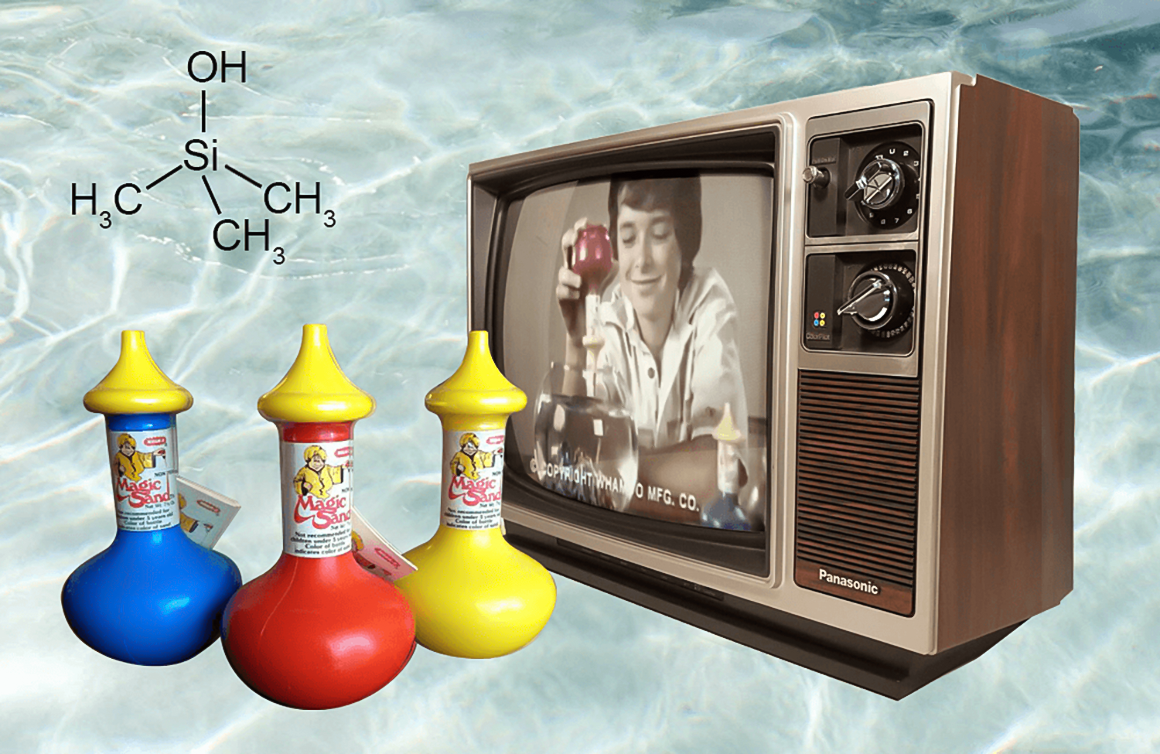Long before Kinetic Sand arrived in 2014, Wham-O used chemistry to create Magic Sand—a toy substance that defied nature.
BENEATH THE SURFACE
Released in 1981, Magic Sand was the sand that refused to get wet. At first glance, it looked and acted much like regular beach sand, with a granular and free-flowing texture. But in water, Magic Sand displayed its … well, its magic … by repelling water.
Children could mold and build structures that held their shape underwater but disintegrated as soon as they were scooped out. Miraculously, as soon as Magic Sand contacted air, it dried instantly.
Teachers loved Magic Sand because it checked all the boxes for science class experiments; parents loved it because it was non-toxic and didn’t make a gloppy mess.
WEIRD SCIENCE
While Magic Sand seemed to have emerged from magician David Copperfield’s playbook, there was good science behind the hocus-pocus. The secret was in a coating of trimethylhydroxysilane—a silicon-based substance that made Magic Sand water-repellent. While nature-made beach sand is hydrophilic (attracted to water), Wham-O used chemistry to transform Magic Sand into the unexpected: hydrophobic!
FIND OUT MORE
Wham-O initially sold magic sand dyed in three colours (red, blue, and yellow) and packaged it in a color-matched bottle with a genie on it. Check out this TV commercial from 1981.
Note: If you buy something using the eBay link in this story, we may earn a small commission. Thank you for supporting independent toy journalism!

